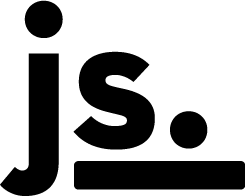Flight Deck
Problem
Users would spend 8+ hours each week walking through multiple reports and applications trying to fully understand what they needed to work on. The normally consisted of starting their day at 4:00 - 5:00 am at the beginning of the week, printing off multiple reports, leaving stickies around their desk, and putting notes and reports in a binder that they had to keep track of.
The Ask
How might we create the binder digitally, while reducing reports, in a way that is clean and refined.
Case Study Contents:
- 12 week Design Sprint
- 70+ user interviews
- Personas
- Journey maps
- Prototypes
My role in the project
Role: Lead Designer
When: May 2018 - August 2018
12 Week Design Sprint
What is the problem we are really trying to solve?
During this time we locked ourselves in a War Room and buckled down to understand the problem our users were having and how to help.
Our process was simple... Understand, Diverge, Decide, Prototype, and Validate. This Agile process was carried out several times during the 12 week sprint focusing on the Decide, Prototype, and Validate.
User Interviews
What is the user telling us?

What we learned
After completing multiple rounds of interviews we started to see themes and groupings that then allowed us to continue with our "How Might We" solve or at least instances to validate.
Design Artifact
A compiled list of AHA!'s, Pain points, Goals, Quotes, and Behaviors. Then we produced a theme document to help start potential feature insights.
Personas
Who are our users?
Journey Map
What are they doing today and how can we make it better?
How
We gathered a couple stakeholders for a two day session and discussed what our assumptions were on what their day looked like.
What we learned
Our stakeholders were always against the clock and never had an up-to-date analysis.
Design Artifact
We gathered all our notes, whiteboard sketches, and sticky notes and created these journey maps that we shared with them.
Paper Prototyping/Whiteboard Prototyping
Its time to decide





Moderated User Testing
Let's test it and see if it helps
How
We created a couple simple flows to get the idea started with our users and created a set of tasks to complete.
What we learned
We failed and succeed out of the gate. While the user loved the simpleness of the concept the detail was not enough. While testing the prototype we increased our backlog of things we wanted to explore.
The aftermath
By the time we ended the Design sprint we had created 12 iterations, expanding upon each version with user and business feedback to create a better product. The 12th version is what we ended up defining as our MVP.
Development phases was underway.
The Solution
Create an application that allowed the user to understand where they were within the company by showing targeted metrics that were relevant to them. Next, decide what they needed to work on and insights to support. Lastly, an ability for them to act on reactive/proactive opportunities in their areas of business.
Quotes
"I was able to to understand my business and what I needed to do in 3 minutes instead of the normal 3 hours"
- Steve Bratspies (Chief Merchandising Officer)
- Steve Bratspies (Chief Merchandising Officer)
The Results
The application piloted in August of 2018 to a council of users. During that fall, we continued to have bi-weekly design thinking sessions to rapidly fail and/or succeed to elevate the product. By January of 2019, we had ramped to over 2,000 users effectively changing how they ran their desk.
Over time we added additional data and experience tools to the platform to help data-inform our decisions and develop themes which equated to problems to solve. Some of those tools were Hot Jar, MixPanel, and Opinion Lab.
Those tools allowed us to understand behavior, engagement, adoption, retention, and task success.
